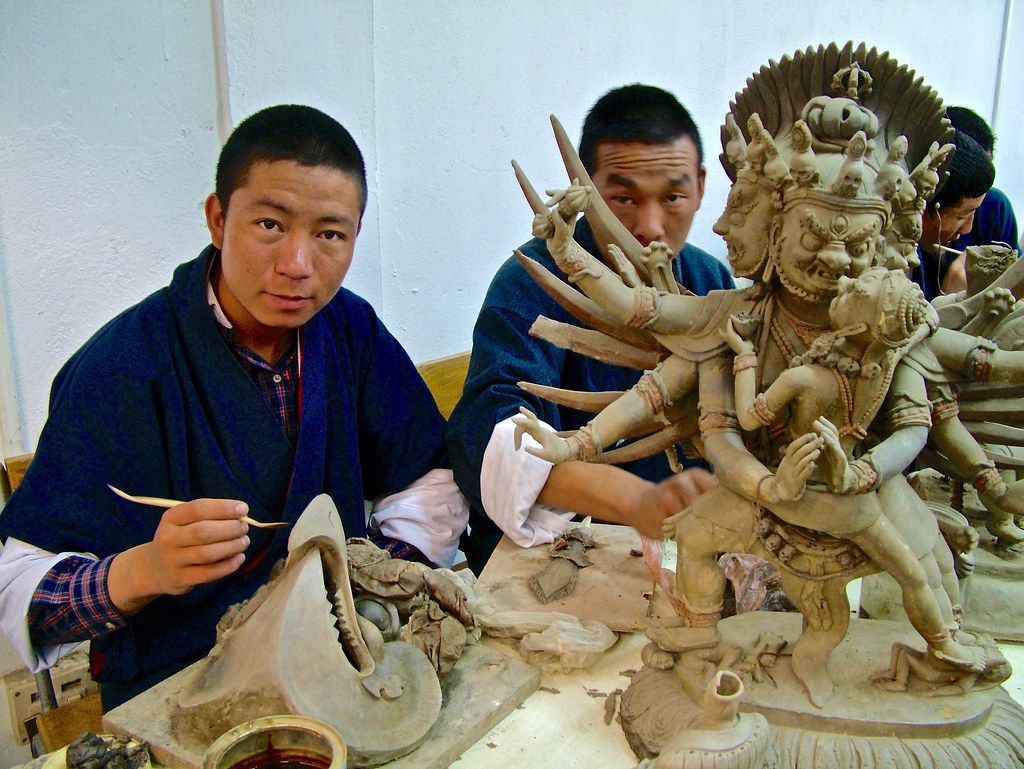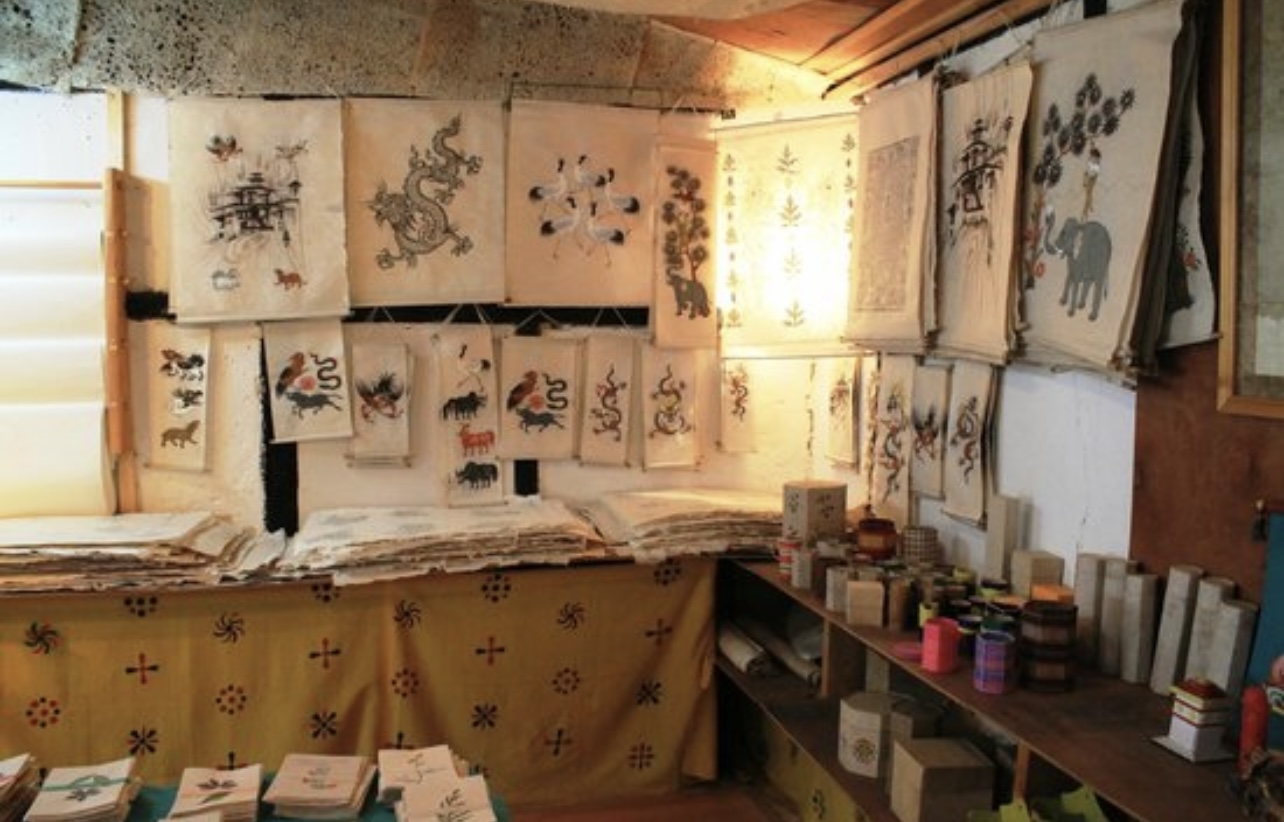Bhutan is renowned for its rich cultural heritage, and one of the most striking features of its identity is its arts and crafts. These art forms reflect the country’s deep-rooted spirituality and reverence for nature. A Bhutan luxury tour provides a unique opportunity to explore and appreciate the intricate craftsmanship that defines the Kingdom of Bhutan. The arts and crafts of Bhutan are not just aesthetic expressions; they embody a spiritual connection to the divine and the natural world. Known collectively as Zorig Chusum, which translates to the “13 Arts and Crafts,” these traditions are integral to Bhutanese life and continue to thrive, preserved by both skilled artisans and the royal patronage of the country.
Each of the 13 crafts practiced in Bhutan is associated with Buddhist teachings and local folklore, offering an insight into the country’s history and cultural diversity. These arts, which span everything from painting to metalwork, are rooted in ancient traditions but are also evolving, with younger generations learning the skills that have been passed down for centuries. For those traveling to Bhutan in luxury, these crafts present an unparalleled way to connect with the soul of the nation.
Let’s explore the timeless Bhutanese arts and crafts in more detail:
-
Lhazo – Bhutanese Wall Paintings
One of the most distinctive features of Bhutanese art is Lhazo, the practice of wall painting. These vibrant and detailed artworks are found in homes, monasteries, and temples across Bhutan. Bhutanese wall paintings, often created using natural pigments derived from minerals and soil, depict sacred themes such as deities, mandalas, and religious symbols. The paintings also include local traditions and nature, reflecting the people’s harmonious relationship with the environment. A Bhutan luxury tour will offer an opportunity to witness these intricate works in famous places such as the Chimi Lhakhang, where the phallus paintings—representing fertility and protection—are part of the local architectural fabric.
-
Jimzo – Sculpting

Sculpting in Bhutan, known as Jimzo, has deep spiritual roots. Clay statues of deities such as Buddha, Guru Rinpoche, and other significant figures in Buddhist culture are often found in temples and monasteries. The art of Jimzo predates metal and bronze sculptures, using clay to form statues that are not only decorative but also serve as religious symbols. During your Bhutan luxury tour, you can visit temples like the Paro Taktsang (Tiger’s Nest) where exquisite clay sculptures are a testament to Bhutan’s deep spiritual heritage. The craftsmanship behind these statues requires patience and reverence, with each figure designed to embody divine attributes.
-
Shingzo – Wood Carving
Shingzo, or wood carving, is an art form that has flourished in Bhutan for centuries. From intricate furniture to grand architectural structures like the Dzongs and temples, wood carving is integral to Bhutanese culture. Master carpenters, known as Zo Chen and Zo Wo, carve delicate and complex designs into wood, a practice seen in iconic Bhutanese buildings such as the Punakha Dzong. On a Bhutan luxury tour, visitors can explore these architectural marvels, where the beauty of wood carving is not just in the intricate details but also in its symbolic meaning, often representing elements of Buddhism.
-
Parzo – Carving
Introduced by Tibetan Buddhists in the 13th century, Parzo refers to the art of carving images into various materials, including wood, stone, and slate. Bhutan’s rich biodiversity and variety of tree species offer a plethora of materials for carvers. Parzo is used to create spiritual images, such as masks for Bhutan’s Tsechu festivals, and symbols like the phallus, which is an emblem of good luck and protection in Bhutanese culture. During your tour, you can visit rural villages and temples where you can admire the wood and stone carvings that adorn the walls and buildings, all imbued with centuries of tradition.
-
Dezo – Papermaking

The craft of papermaking, known as Dezo, involves making paper from the bark of local plants like Daphne and Edgeworthia. This paper, prized for its durability and natural texture, has long been used to produce religious manuscripts and scriptures. The art is still practiced today, and you can witness the meticulous process at places like the Jungshi Handmade Paper Factory. A luxury tour of Bhutan will give you the chance to buy exquisite handmade paper products, such as greeting cards or journals, to take home as souvenirs.
-
Dozo – Masonry
In Bhutan, the art of masonry—known as Dozo—is crucial in the construction of some of the most iconic stone structures, such as the Chorten Kora in Trashiyangtse. Masons, or Zope, are responsible for preparing mortar and constructing buildings, walls, stupas, and temples, often using locally sourced stone. On a Bhutan luxury tour, you can explore the ancient stonework that forms the backbone of Bhutanese architecture, observing how traditional techniques continue to be used to create these enduring structures.
-
Shagzo – Wood Turning
Shagzo is the Bhutanese art of wood turning, which dates back centuries. It involves creating bowls, cups, plates, and other functional items from wood. Traditionally, Shagzo artisans, known as Shagzopa, used woods like tashing and burl, the latter being especially prized for its unique patterns. A Bhutan luxury tour offers a chance to visit local markets where handcrafted wooden containers are sold, as well as to meet the artisans behind this beautiful, utilitarian art.
-
Thagzo – Weaving
Thagzo refers to the art of textile weaving, a craft predominantly practiced by women in rural Bhutan. The intricate weaving of textiles, especially the highly symbolic Kishuthara, is done using cotton, silk, and wool yarns. The patterns created during weaving often carry deep cultural meanings. On a luxury tour, you can explore villages like Khoma and Adang, where skilled weavers create colorful and vibrant textiles. The intricacy of Bhutanese textiles makes them not only practical but also beautiful expressions of the country’s cultural identity.
-
Tshemzo – Embroidery

Tshemzo, the art of embroidery, has evolved from a religious practice to a craft applied to household items and clothing. Embroidered textiles, such as thangkas (scroll paintings) and thongdrels, are used during religious festivals, particularly the Tshechu festivals. Embroidery plays a key role in Bhutanese ceremonial life, and a luxury tour to Bhutan allows visitors to admire the exquisite craftsmanship of Tshemzo, whether it is in traditional garments or other decorative household items.
-
Lugzo – Casting
The art of metal casting, known as Lugzo, involves creating intricate objects from bronze and other metals. Introduced by Newari artisans in the 17th century, this craft is used to produce everything from religious statues to utensils, armor, and tools. The casting techniques—wax and sand casting—are still practiced today, particularly in creating religious idols and ritual objects. A luxury tour offers an exclusive experience to visit the metalworking workshops where you can watch artisans at work, molding and shaping bronze with incredible skill.
-
Tsharzo – Cane Weaving
In central and eastern Bhutan, bamboo and cane weaving, known as Tsharzo, is a vital craft that draws on the abundant natural resources of the region. Traditionally, this craft was used to create functional items such as baskets, mats, and fences. Today, it also includes decorative items that can be purchased by tourists as souvenirs. On your luxury tour, you may visit the areas where these items are crafted, gaining insight into how bamboo weaving continues to play a significant role in the daily lives of Bhutanese people.
-
Garzo – Blacksmithing
The craft of blacksmithing, called Garzo, was introduced to Bhutan in the 14th century. Blacksmiths, known as Garzo Lopon, use iron ore to create everything from tools and weapons to structural elements such as bridges. The suspension bridge over the Paro Chhu, built by Thangtong Gyalpo, is a prime example of Bhutanese blacksmithing. On a luxury tour of Bhutan, you can visit sites where these artisans continue to forge functional yet beautifully crafted metalwork.
-
Troeko – Metal Ornaments
Finally, Troeko, the art of making metal ornaments, is a symbol of both beauty and status in Bhutan. Artisans use precious metals like gold and silver, along with stones like turquoise and coral, to create elaborate jewelry and decorative items. These pieces often carry deep symbolic meaning, linking the wearer to Bhutan’s cultural and spiritual traditions. A Bhutan luxury tour will allow you to visit shops where these stunning pieces of jewelry are sold, offering you the chance to take home a meaningful memento of Bhutan’s artistic heritage.
In conclusion, Bhutan’s Zorig Chusum—the 13 arts and crafts—are not only cultural treasures but also offer travelers a chance to engage deeply with the country’s spiritual and artistic traditions. A Bhutan luxury tour will provide an immersive experience, allowing you to witness these arts in action and connect with the people and landscapes that have nurtured them for centuries.

